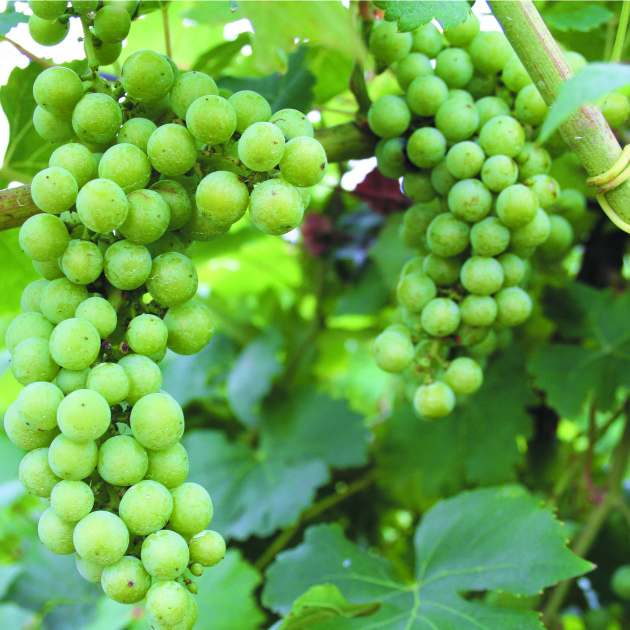
Tim Atkin: Semillon - The Naked Grape
When I was younger, fitter and considerably trimmer than I am now, I took part (twice) in a wine trade version of The Full Monty for charity. The name of our group of buffed-up writers, sommeliers and importers was The Semillons (geddit?). So, when I received an invitation to an event called The Semillon Sessions recently, part of me hoped that a new group of amateur strippers would be strutting their moves on a stage somewhere.
The truth was more prosaic, but ultimately just as revealing in its own way. Four Chilean wineries – Aresti, Bouchon, Carmen and J. A. Jofré – had got together to promote this surprisingly undervalued grape variety. Undervalued? Yes indeed.
Even Julio Bouchon, whose Granito Semillon is one of the best in the New World, admits that there’s “no market yet” for Chilean expressions of the grape. Of the country’s plantings of 141,000ha, only 950 are Semillon and all but 50 of those are used to make bulk wine. “Old vine Semillon sells for the same price as basic Sauvignon Blanc,” he conceded, “so there’s not much incentive to grow it.”
Semillon’s fall from prominence has been dramatic. In the 1950s, a third of Chile’s (admittedly smaller) area under vine was Semillon, which means that a lot of what has survived is old and low yielding. This makes it popular with winemakers, but not necessarily with growers, who perhaps understandably favour more profitable grapes. Juan Alejandro Jofré admitted that there is only one solution: “I pay more.”
Look at the global figures and Semillon doesn’t appear to be doing too badly. Dr Kym Anderson of the University of Adelaide, whose statistics are the most reliable, reckons that there were 22,156ha in 2010, making it the 39th most planted grape in the world, with a significant presence in France (thank you, Bordeaux) and Australia, and around 1,000ha each in Chile, Argentina and South Africa. Add the USA, Brazil, New Zealand and Greece and you have a grape that’s pretty well travelled.
If Dr Anderson had been around in the late 19th century, his figures would have surely put Semillon in the top 10. In those days, it was the most planted white grape in both South Africa (where it covered 90% of the Cape’s vineyards at one point) and Argentina, and quite possibly Chile too. Quality went with quantity. In the early 20th century, Leopoldo Suárez’s treatise on Mendoza claimed that Semillon was responsible for the region’s best whites, “especially on limestone soils”.
Downward spiral
Since that global high point, it’s all been downhill, often at considerable speed. What’s worse is that in many of the places where Semillon is still grown, it’s part of a Bordeaux blend double act with Sauvignon Blanc, a grape which is genetically close to it but vastly, and gallingly, more popular: the lead singer rather than the backing vocalist.
Where Semillon takes the limelight, it’s generally because of its susceptibility to botrytis (Sauternes and Barsac spring to mind) or because it’s evolved into a unique style (the Hunter Valley) based on early picking to preserve acidity and bottle age.
Part of the problem with Semillon – as The Semillon Sessions’ well-informed MC Richard Hemming MW pointed out – is that it’s diverse and therefore difficult to categorise. Is it best as a dry or a sweet wine? Oaked or unoaked? Does it have an affinity with a particular climate or soil type? Sauvignon Blanc is a lot easier to understand, running the gamut of flavours from A-C, as Dorothy Parker might have put it. The eyebrow-raising success of commercial Kiwi Sauvignon Blanc – gooseberry fruity and slightly sweet – is no accident. Varietal Semillon, on the other hand, is a classic dust-gatherer on supermarket shelves.
But is Semillon staging a fightback? It’s certainly taken seriously by many of South Africa’s new-wave producers – Eben Sadie, Chris Alheit and John Seccombe of Thorne & Daughters all make great standalone Semillons – and by Argentinian wineries such as Mendel, Marcelo Miras and Riccitelli wines. And those four Chilean wineries all proved that they can make very different, but equally impressive ones. “We don’t know what the potential of Semillon is in Chile,” argued Emily Faulconer of Viña Carmen, but I think we do now.
The most distinctive and highly praised wine in The Semillon Sessions’ blind tasting was the Mount Pleasant Elizabeth 2009 from the Hunter Valley, but outstanding examples of the grape can come from half a dozen places these days – or more. Bordeaux and Australia can’t have Semillon all to themselves.
Talking of Bordeaux, any grape that dominates the blends of Châteaux d’Yquem and Haut-Brion Blanc can’t be doing too badly, and yet there’s a sense in the Gironde that Semillon needs other grapes to make up for its inadequacies. The Semillon Sessions confirmed what a lot of savvy wine drinkers already know: oaked or unoaked, clothed or fully naked, the variety deserves to be taken seriously in its own right.




